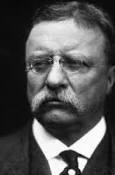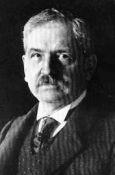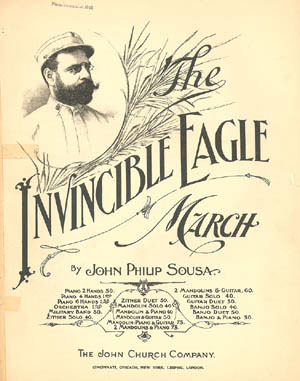
Postage Stamps of the United States - 1902
Politics

President
Theodore Roosevelt

Postmaster General
Jan. 1 - Jan. 8
Charles Emory Smith
Jan. 9 - Dec. 31
Henry C. Payne
Music

Click Control Above To Hear
1902 "The Invincible Eagle March"
Postage Rate
Domestic Letter Rate: 2¢ per oz.
Card Rate: 1¢
Registry Fee: 8¢
Foreign Rate: 5¢
Stamps
The New and Intricate Designs of the Regular Issues First Issued in 1902
The Second Bureau Issues - see also: Designs of the 1902 Series First Issued in 1903
Flat Plate - Perf 12 - Double-line Watermark - 400 Subject Plates - Designer : R. Ostrander Smith
Engravers
Vignette: 8¢ - G.F.C. Smillie, Rose and Robert Ponickau 13¢ - Marcus Baldwin
Frame: 8¢ - G.F.C. Smillie, G. Rose and Robert Ponickau 13¢ - Lyman F. Ellis

13¢ Benjamin Harrison

8¢ Martha Washington
The New Designs of the Series of 1902
Flush with the success of the Pan-American stamps of 1901, and considering that the then current designs of the regular issues were more than ten years old, the Post Office Department decided to issue a set of new designs for the ordinary postage stamps in 1902.
Although this series is commonly known as the "Series of 1902", and in fact all of the stamps in this series are inscribed "Series 1902", only two of the stamps were issued in 1902, with the balance being issued a year later in 1903. The series included a denomination that had never appeared on a U.S. postage stamp before, thirteen cents, and for the first time included a stamp portraying a woman. Like the Pan-American stamps, the Series of 1902 gave the artists and engravers free reign, resulting in some of the most intricate, if not ornate, designs ever placed on U.S. postage stamps. There were many complaints concerning the designs of the various frames, and in fact one stamp, the two cents, was redesigned completely - see the Nov. 12, 1903 stamp
The 13¢ Benjamin Harrison
The thirteen cent stamp was the first stamp issued in this series and served a two-fold purpose. It honored Benjamin Harrison, who had not been recognized on any previous issue, and it paid the foreign rate for a registered letter. According to Post Office Department records, the 13¢ stamp was originally issued in "Dark Slate", but over time it was issued in a brownish violet tint in a deliberate attempt to distinguish it from the 8¢ stamp. Both this and the eight cent stamp present a nice variety of shades for the collector.
The 8¢ Martha Washington
The eight cent stamp represents a change in attitude and a growing awareness of the importance of women's contributions to American society. Although it would be another eighteen years before the 19th Amendment was adopted, giving women the right to vote, the women's suffrage movement was already in full bloom. After much bickering over who the appropriate woman to honor would be, Martha Washington received the least resistance and her likeness was placed on this stamp. The artwork and choice of color, "dark lilac", resulted in what many have deemed to be the most beautiful stamp in the series. As with the 13¢ stamp, the eight cent stamp underwent a color change, as it was issued in deeper and deeper shades until it nearly took on the "dark slate" black color originally reserved for the thirteen cent stamp. Ironically, this was done purposefully to distinguish it from the thirteen cent stamp. The original lilac stamps bring a small premium.
The Special Delivery Stamp of 1902
Flat Plate - Perf 12 - D/L Wmk. - 100 Subject Plates

Issue Date: Dec. 9, 1902
The 10¢ Messenger on Bicycle Special Delivery Stamp of 1902
Although not a quantum leap from the earlier special delivery stamps depicting a running messenger, the Messenger on Bicycle stamp did reflect in a small way the importance technology would play in America's future, clearly mirroring the mood of the time. Written on the stamp were the words "Secures immediate delivery at any United States Post Office" the same wording that appeared on the earlier special delivery stamps. The new stamp was inscribed "Series 1902" as were the regular issues of 1902 and 1903. This inscription remained on all special delivery stamps for nearly twenty years, until the Messenger on Motorcycle design of 1922 replaced it, long after the ordinary stamps of the Series of 1902 had been replaced by the Washington Franklin stamps.
The following postage stamp varieties were first issued by the U.S. in 1902:
No new varieties of U.S. commemorative stamps were issued in 1902
No new varieties of the U.S. Postage Due stamps were issued in 1902
Ordinary issue:
Number 306 - 8¢ Martha Washington - Series of 1902 - Issued: 12/6(?)/02 - EDU: 12/27/02 - 176,841,474 issued
Number 308 - 13¢ Benjamin Harrison - Series of 1902 - Issued: 11/18(?)/02 - EDU: 11/18/02 - 31,290,174 issued
Special Delivery:
Number E6 - 10¢ Messenger on Bicycle - perf 12 - Double-line Watermark





